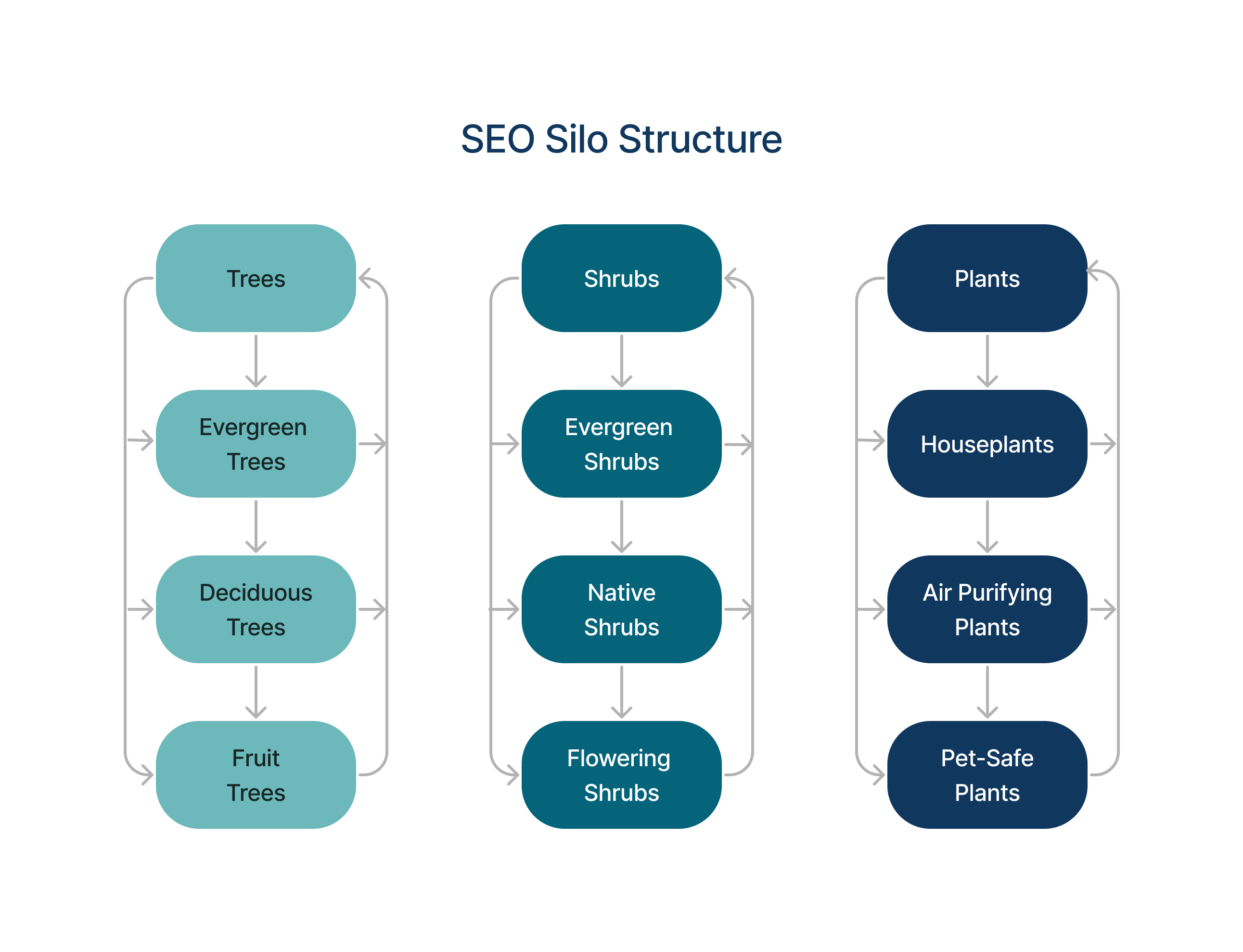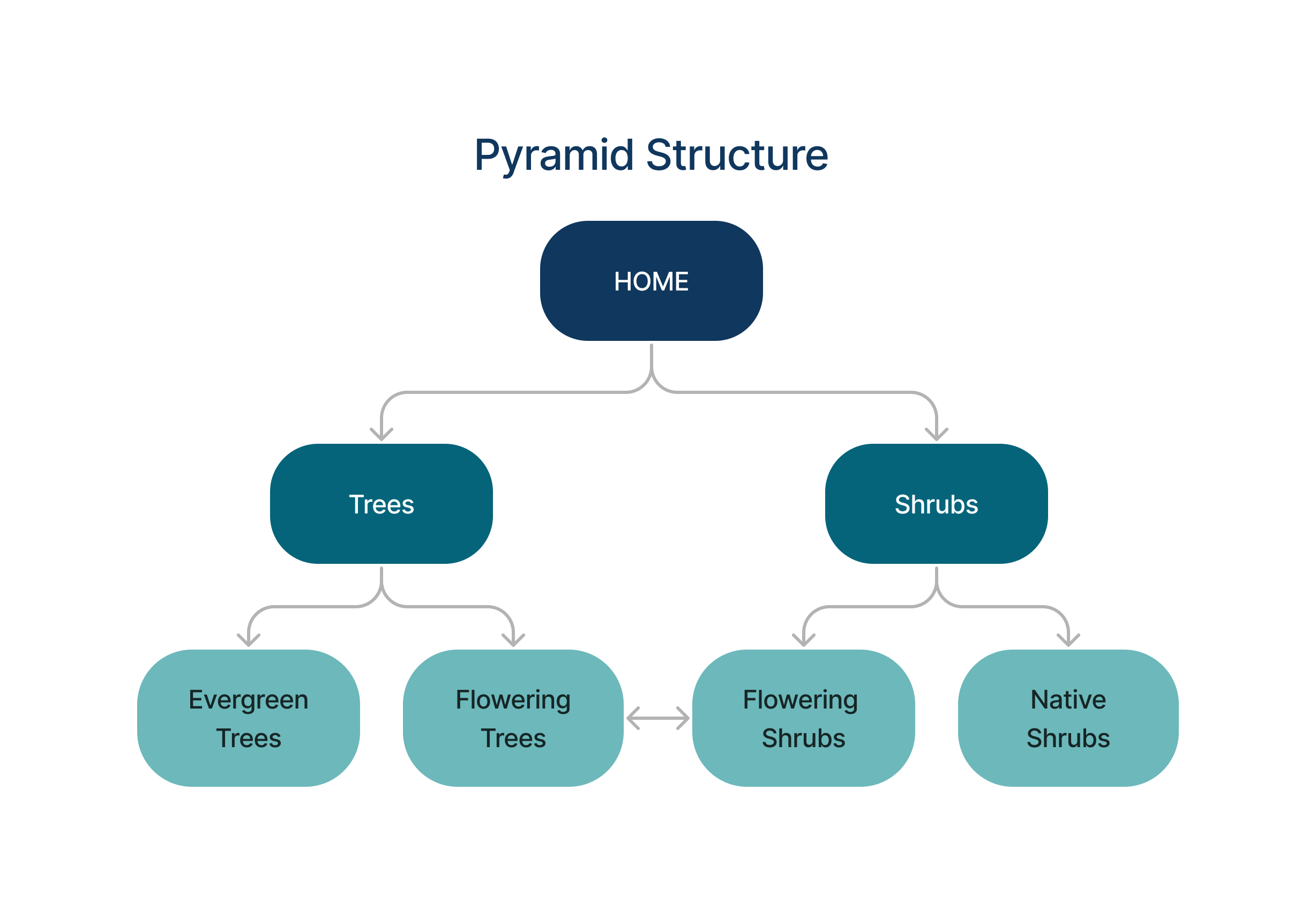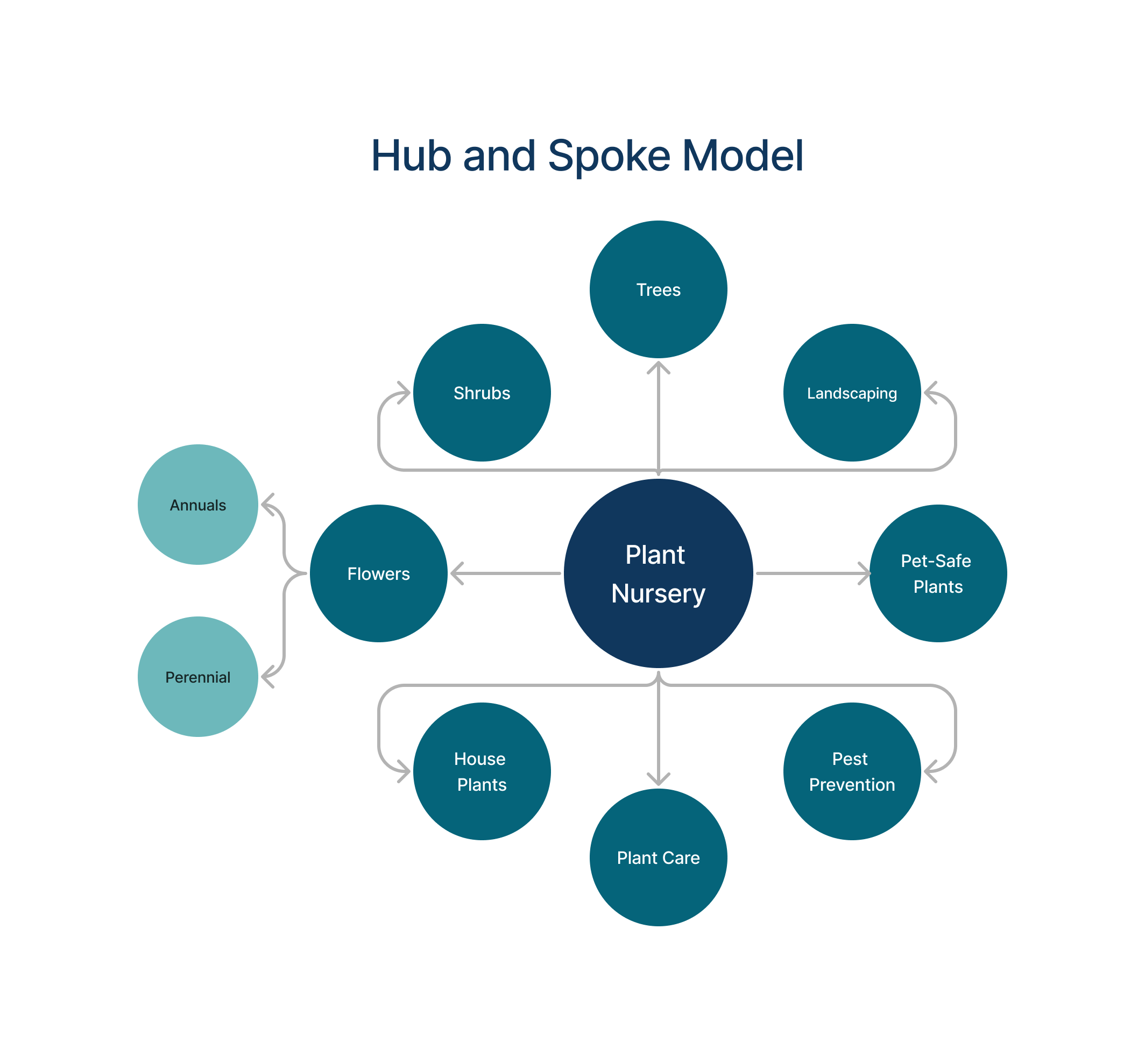Understanding What SEO Silos Are & How to Use Them
If you’re a business owner or marketer trying to improve your website’s search engine rankings, you’ve probably come across the concept of an SEO silo. But what exactly are they? And how can you use SEO silos to improve your organic strategy?
In this blog post, we’ll break down the basics of SEO silos and provide expert strategies on how to implement them effectively (as well as alternative solutions).
Table of Contents
- What is an SEO Silo?
- Why is Silo SEO Useful?
- What are the Silo SEO Drawbacks?
- 4 Best Practices for a Great Website Structure
- What Do We Recommend?
What is an SEO Silo?
An SEO silo refers to a website structure that organizes content into specific topics, or “silos.”
Each silo allows businesses to better target specific keywords and create relevant content for the topic. These silos are linked together to establish a clear hierarchy of information. By doing so, search engines can more easily identify and crawl the content on your website, leading to better overall rankings.

Why is Silo SEO Useful?
1. Search Engines Can Find Your Pages More Easily
Internal links are crucial in an SEO silo strategy. They help search engines discover, crawl, and index your content. Remember to keep your most important pages accessible and avoid placing them too deep within your website (jump down to understand why).
2. An SEO Silo Strategy Can Increase Keyword Rankings
Each silo should focus on a specific topic or theme, with all the content within that silo closely related to the main topic and organized in a logical way. This helps search engines to more easily understand the focus of each SEO silo and which keywords it should rank for.
For example, imagine you run a pet store and want to improve your website’s ranking for the keyword “dog food”. You could create an SEO silo around this topic, with each subpage within the silo focusing on a specific type of dog food (i.e. dry dog food, wet dog food, organic dog food, etc.).
This would make it clear to search engines that your website has authority on dog food, and helps you rank higher for related keywords.
3. Internal Links Transfer “Link Juice”
Internal links play a vital role in increasing a website’s SEO performance as a result of PageRank. PageRank is a Google algorithm that ranks web pages based on the quality and quantity of incoming links.
A silo SEO strategy relies on internal links to distribute authority by passing “link juice” (ranking power) from high-authority pages to other pages within the website. By strategically linking to important pages from relevant content across your site, internal links help increase authority and rankings.
Internal links are beneficial for additional reasons:
- Avoid creating orphan pages (pages that are not linked to nor link to any other page).
- Makes a website easier to navigate and more user-friendly.
- Helps establish a clear structure of website hierarchy, telling search engines and people what the most important web pages are.
- Targeting keywords within the anchor text of an internal link helps increase keyword rankings.
4. Create a Better User Experience (UX)
It’s also important to note that SEO silos have benefits beyond just improving search engine rankings. They can also make your website more user-friendly by helping visitors find the information they’re looking for more easily. By organizing content in a clear and logical way, you create a better overall user experience.
5. Reduce Keyword Cannibalization
Another benefit of using SEO silos is that they can help to reduce “keyword cannibalization”, which occurs when multiple pages on your website are competing for the same keyword. By organizing your content into distinct silos, you can ensure that only one page within each SEO silo is targeting each specific keyword, reducing the chance of cannibalization and improving your overall SEO.
What are the Silo SEO Drawbacks?
1. Potential Limitations to Internal Links
While SEO silo structures can be effective for organizing content on a website, they do come with certain limitations. One of the main drawbacks is that internal links can only be added within the respective silo structure.
If a topic falls outside of the silo structure, the true practice of this strategy doesn’t allow for an internal link to be added even if it’s relevant. This can limit the overall number of internal links that a website can have, hindering its ability to improve its search engine rankings.
Furthermore, once there’s no more content created within that silo structure, internal links come to an end. Therefore, websites employing a silo SEO strategy should use it alongside other SEO tactics to ensure optimal results.
2. Orphan URLs Can Be Created if Not Careful
Implementing a strict SEO silo structure can lead to the unintentional creation of orphan pages. Search engines see Orphan URLs as unimportant, leading to their removal from search results as a result of not being crawled and indexed by search engines.
When pages are contained within the same silo, they may be well-linked but connections to other silos are neglected. As a result, it can disrupt the organic traffic flow.
This poses a serious issue since website visitors might not easily discover pages outside of their existing silo. Additionally, when focusing on optimizing existing content within silos, businesses can overlook opportunities to create new content that’s not yet featured on the website or to connect topics together.
Technical errors can also create unintentional orphan pages. For example, internal links can be eliminated during a content cleanup. While this is helpful in improving a website’s crawl budget, pages that once were linked to by the removed page now become an orphan URL.
With these potential hazards in mind, conducting site audits regularly for orphan URLs is crucial so they can be fixed immediately.
3. Not a Good Solution for Websites that Change Quickly
Not all types of websites benefit from SEO silos. For example, if you run a news website with constantly changing content, an SEO silo structure may not be the best fit.
However, for those with more static content that is organized into clearly defined topic areas, implementing an SEO silo structure can be a game-changer.
4 Best Practices for a Great Website Structure
1. Go with a Pyramid Structure
The pyramid structure in SEO prioritizes your most valuable pages at the top, acting as authority hubs. These “hub pages” attract links and distribute authority (think “link juice”) to progressively more specific sub-pages below.
A pyramid structure and an SEO silo are similar, but a pyramid structure allows you to internally link to any relevant content instead of just within the silo structure.
Websites can still achieve organized content, intuitive navigation, transferred PageRank value, and contextual internal links.

2. Internally Link to Relevant Pages (Not Just SEO Silos)
A pyramid structure promotes internal links to related pages outside of the SEO silo structure. As a reminder, the content must be relevant and related to the page that it’s internally linking to.
Consider taking a hybrid approach with your internal links. Internally link within an SEO silo structure to build authority to relevant content within that topic. But don’t stop there — internally link to other relevant pages that fall outside of the SEO silo as long as it adds genuine value to your audience.
3. Follow the Hub and Spoke Model
The Hub and Spoke model is a strategy made up of a pillar (hub) page that connects to smaller related content pieces considered the “spokes.” A hub page acts as the central content piece of a topic to attract traffic as well as fuel the creation of shorter, focused spoke pieces that link back and deepen the topic’s reach.

Think of it as a knowledge web that grows stronger and more authoritative as it expands. The Hub and Spoke model is highly effective in increasing SEO performance for the following reasons:
- Develops Authority: The hub or pillar page gains significant authority on the main topic. This authority spills onto the spoke content pieces, boosting their ranking and visibility. It’s a best practice to deliver well-structured content that internally links to other valuable and relevant pages within the site.
- Effectively Targets Multiple Keywords: The hub page targets high search volume and high user intent keywords, while the spoke pieces target related, long-tail keywords. This broadens your reach and attracts people at different stages of their search journey.
- Strengthen Internal Links: The spoke pieces all point back to the hub page, creating a strong internal linking structure. Internally linking to relevant content within your website increases the PageRank value, which distributes “link juice” (ranking power) throughout your site. As a result, it boosts your overall SEO performance.
4. Make the Most Important Content Easily Accessible
Do not shove your most important web pages too deep into your website, making it difficult for people to access them. While Google will find the web page at some point if it’s properly linked, it will not prioritize crawling or indexing it quickly. Search engines consider content placed deep within a website less important.
What Do We Recommend?
Both a pyramid and an SEO silo structure offer numerous benefits to websites. Summit Scout is a proponent of taking a hybrid approach depending on the website’s needs and state, along with creating content using the Hub and Spoke method.
Implementing both in the best way possible will result in higher keyword rankings, driving qualified traffic and leads to your website. We can help you achieve this, call us today to schedule a free consultation, or visit us to learn more about our organic SEO company!
